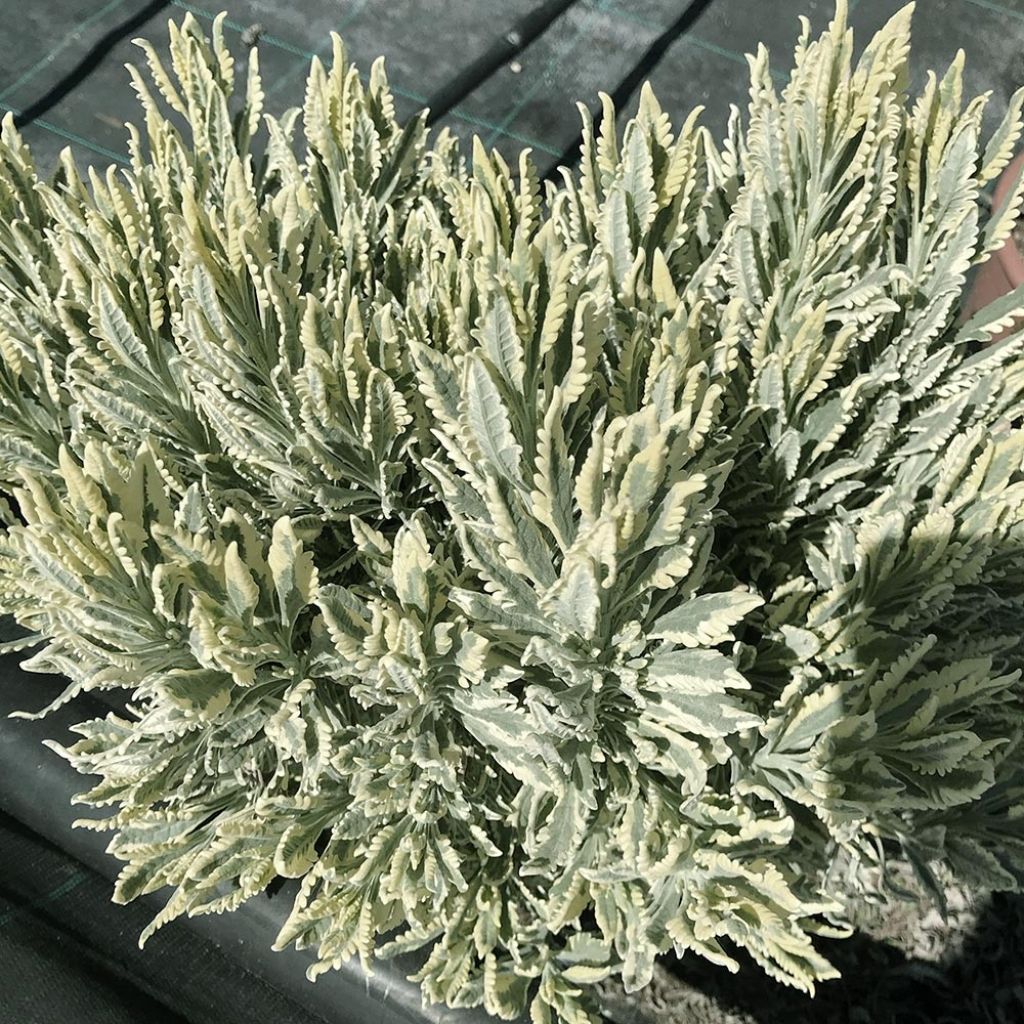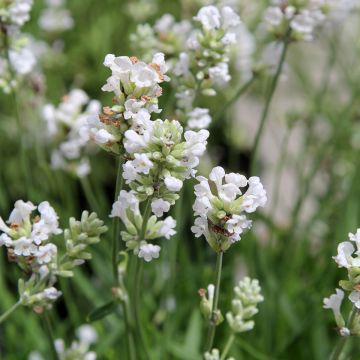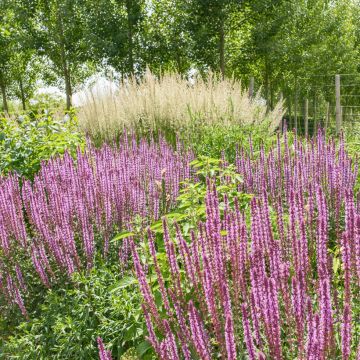

Lavandula allardii Meerlo - Lavender


Lavandula allardii Meerlo - Lavender


Lavandula allardii Meerlo - Lavender


Lavandula allardii Meerlo - Lavender


Lavandula allardii Meerlo - Lavender


Lavandula allardii Meerlo - Lavender
Lavandula allardii Meerlo - Lavender
Lavandula latifolia x dentata Meerlo
Lavender
Deleted
Marie Genevieve F., 29/03/2023
Special offer!
Receive a €20 voucher for any order over €90 (excluding delivery costs, credit notes, and plastic-free options)!
1- Add your favorite plants to your cart.
2- Once you have reached €90, confirm your order (you can even choose the delivery date!).
3- As soon as your order is shipped, you will receive an email containing your voucher code, valid for 3 months (90 days).
Your voucher is unique and can only be used once, for any order with a minimum value of €20, excluding delivery costs.
Can be combined with other current offers, non-divisible and non-refundable.
Why not try an alternative variety in stock?
View all →This plant carries a 12 months recovery warranty
More information
We guarantee the quality of our plants for a full growing cycle, and will replace at our expense any plant that fails to recover under normal climatic and planting conditions.
Would this plant suit my garden?
Set up your Plantfit profile →
Description
Lavandula x allardii Meerlo is a very beautiful hybrid lavender, with fast growth, reaching a height of 90 cm (35in). It has exceptional foliage, leaves are aromatic and an olive-greyish green colour with dentate edges, and variegated with white-cream. The bush blooms in summer, in the form of tall spikes of light lavender mauve flowers. Forming a beautiful rounded mass, this evergreen plant is decorative all year round, even in winter. It is grown in open ground in mild regions, in full sun, in poor and very well-drained soil. It is also a beautiful patio plant, which should be stored away from strong frosts.
Lavandula Meerlo is a recently selected horticultural creation from New Zealand. It is part of a hybridisation program carried out between Lavandula dentata, from Spain and Morocco, and Lavandula latifolia from France. All plants resulting from this cross, formerly identified as Lavandula x allardii, are now named Lavandula x heterophylla. They are vigorous lavenders but not very hardy, with foliage that resembles that of the Lavandula dentata to varying degrees, but with flowering similar in shape to their second parent L. latifolia. All these plants are shrubs with woody stems belonging to the Lamiaceae family, related to sage, thyme, mint, and rosemary.
Lavandula Meerlo forms a large, rounded, and bushy clump within two years, composed with leafy stems. At maturity, it will reach an average size of 80-90cm (32-35in) in all directions. Its evergreen foliage is composed of large elongated and spatulate leaves, whose variegated colour will be lighter in dry soil. These leaves, with a variable appearance, are covered with a grey down and are more or less edged with small teeth. They release a fantastic fragrance with the slightest touch, both powerful and sweet, which lingers briefly on the fingers. Flowering usually takes place in June-July (earlier or later depending on the growing conditions). Pale blue-violet scented flower spikes open at the top of long leafy stems that stand out distinctively from the foliage. These attract pollinating insects. The dried leafy stems can be used in wardrobes to repel moths.
With its significant growth, unique foliage, and extraordinary fragrance, Lavandula Meerlo is one of the best hybrids derived from Lavandula dentata. It has its rightful place in an authentic Mediterranean garden, not too cold and not wet, alongside rockroses, rosemary, teucriums, and other shrubs of a dry scrubland. It can also be associated with grasses such as Stipa pennata or Stipa tenuifolia, which, with their tousled appearance, will contrast with its rounded shape and create a harmonious combination. It also works wonderfully among evening primroses, perennial flax, asphodels, euphorbias, or dark shrubs like dwarf conifers. It pairs particularly well with a small bindweed called Convolvulus althaeoides. It is also interesting to combine several lavender varieties together, creating an elegant display with a variety of flower and foliage colours, as well as different plants of varying sizes and volumes.
Tips: the hardiness of this lavender does not exceed -6°C (21.2°F) in very well-draining and dry soil. Outside mild regions, it can be grown in a large pot that can be overwintered in a bright but unheated space.
Lavandula allardii Meerlo - Lavender in pictures




Flowering
Foliage
Plant habit
Botanical data
Lavandula
latifolia x dentata
Meerlo
Lamiaceae
Lavender
Cultivar or hybrid
Other Lavendula - Lavender
View all →Planting and care
Lavandula Meerlo is not the easiest to grow, as it is not hardy and will perish below -6°C (21.2°F), even if planted in well-drained soil. In nature, lavenders always live in poor and stony, dry, perfectly drained environments, in full sun. These plants dislike summer rain, which makes them sick and causes them to disappear, as they are very sensitive to fungal diseases induced by the combination of heat and soil moisture. In winter, they require good drainage, and in summer, they need to be kept dry. Lavender will age better in poor soil, as its growth will be slower and it will have less tendency to become bare at the base. To limit this phenomenon, pruning should be carried out from a young age, after flowering or in autumn, just above the first buds that can be seen on the wood. Lavenders never regrow on old wood. The clump will thus branch out more and more, remaining compact, eventually forming beautiful round and dense cushions. When planting, provide them with what they like: gravel, stones, coarse sand, but definitely not potting soil, compost, or fertiliser!
Pot cultivation is possible, in a mixture of soil, sand, compost, and rocks, as long as watering is perfectly controlled: it should be spaced out in summer to allow the substrate to dry between waterings, and reduced in winter. This cultivation method allows it to be protected from severe frost in a very bright, but unheated, location.
.
Planting period
Intended location
Care
Planting & care advice
-
, onOrder confirmed
Reply from on Promesse de fleurs
Similar products
Haven't found what you were looking for?
Hardiness is the lowest winter temperature a plant can endure without suffering serious damage or even dying. However, hardiness is affected by location (a sheltered area, such as a patio), protection (winter cover) and soil type (hardiness is improved by well-drained soil).

Photo Sharing Terms & Conditions
In order to encourage gardeners to interact and share their experiences, Promesse de fleurs offers various media enabling content to be uploaded onto its Site - in particular via the ‘Photo sharing’ module.
The User agrees to refrain from:
- Posting any content that is illegal, prejudicial, insulting, racist, inciteful to hatred, revisionist, contrary to public decency, that infringes on privacy or on the privacy rights of third parties, in particular the publicity rights of persons and goods, intellectual property rights, or the right to privacy.
- Submitting content on behalf of a third party;
- Impersonate the identity of a third party and/or publish any personal information about a third party;
In general, the User undertakes to refrain from any unethical behaviour.
All Content (in particular text, comments, files, images, photos, videos, creative works, etc.), which may be subject to property or intellectual property rights, image or other private rights, shall remain the property of the User, subject to the limited rights granted by the terms of the licence granted by Promesse de fleurs as stated below. Users are at liberty to publish or not to publish such Content on the Site, notably via the ‘Photo Sharing’ facility, and accept that this Content shall be made public and freely accessible, notably on the Internet.
Users further acknowledge, undertake to have ,and guarantee that they hold all necessary rights and permissions to publish such material on the Site, in particular with regard to the legislation in force pertaining to any privacy, property, intellectual property, image, or contractual rights, or rights of any other nature. By publishing such Content on the Site, Users acknowledge accepting full liability as publishers of the Content within the meaning of the law, and grant Promesse de fleurs, free of charge, an inclusive, worldwide licence for the said Content for the entire duration of its publication, including all reproduction, representation, up/downloading, displaying, performing, transmission, and storage rights.
Users also grant permission for their name to be linked to the Content and accept that this link may not always be made available.
By engaging in posting material, Users consent to their Content becoming automatically accessible on the Internet, in particular on other sites and/or blogs and/or web pages of the Promesse de fleurs site, including in particular social pages and the Promesse de fleurs catalogue.
Users may secure the removal of entrusted content free of charge by issuing a simple request via our contact form.
The flowering period indicated on our website applies to countries and regions located in USDA zone 8 (France, the United Kingdom, Ireland, the Netherlands, etc.)
It will vary according to where you live:
- In zones 9 to 10 (Italy, Spain, Greece, etc.), flowering will occur about 2 to 4 weeks earlier.
- In zones 6 to 7 (Germany, Poland, Slovenia, and lower mountainous regions), flowering will be delayed by 2 to 3 weeks.
- In zone 5 (Central Europe, Scandinavia), blooming will be delayed by 3 to 5 weeks.
In temperate climates, pruning of spring-flowering shrubs (forsythia, spireas, etc.) should be done just after flowering.
Pruning of summer-flowering shrubs (Indian Lilac, Perovskia, etc.) can be done in winter or spring.
In cold regions as well as with frost-sensitive plants, avoid pruning too early when severe frosts may still occur.
The planting period indicated on our website applies to countries and regions located in USDA zone 8 (France, United Kingdom, Ireland, Netherlands).
It will vary according to where you live:
- In Mediterranean zones (Marseille, Madrid, Milan, etc.), autumn and winter are the best planting periods.
- In continental zones (Strasbourg, Munich, Vienna, etc.), delay planting by 2 to 3 weeks in spring and bring it forward by 2 to 4 weeks in autumn.
- In mountainous regions (the Alps, Pyrenees, Carpathians, etc.), it is best to plant in late spring (May-June) or late summer (August-September).
The harvesting period indicated on our website applies to countries and regions in USDA zone 8 (France, England, Ireland, the Netherlands).
In colder areas (Scandinavia, Poland, Austria...) fruit and vegetable harvests are likely to be delayed by 3-4 weeks.
In warmer areas (Italy, Spain, Greece, etc.), harvesting will probably take place earlier, depending on weather conditions.
The sowing periods indicated on our website apply to countries and regions within USDA Zone 8 (France, UK, Ireland, Netherlands).
In colder areas (Scandinavia, Poland, Austria...), delay any outdoor sowing by 3-4 weeks, or sow under glass.
In warmer climes (Italy, Spain, Greece, etc.), bring outdoor sowing forward by a few weeks.




























































